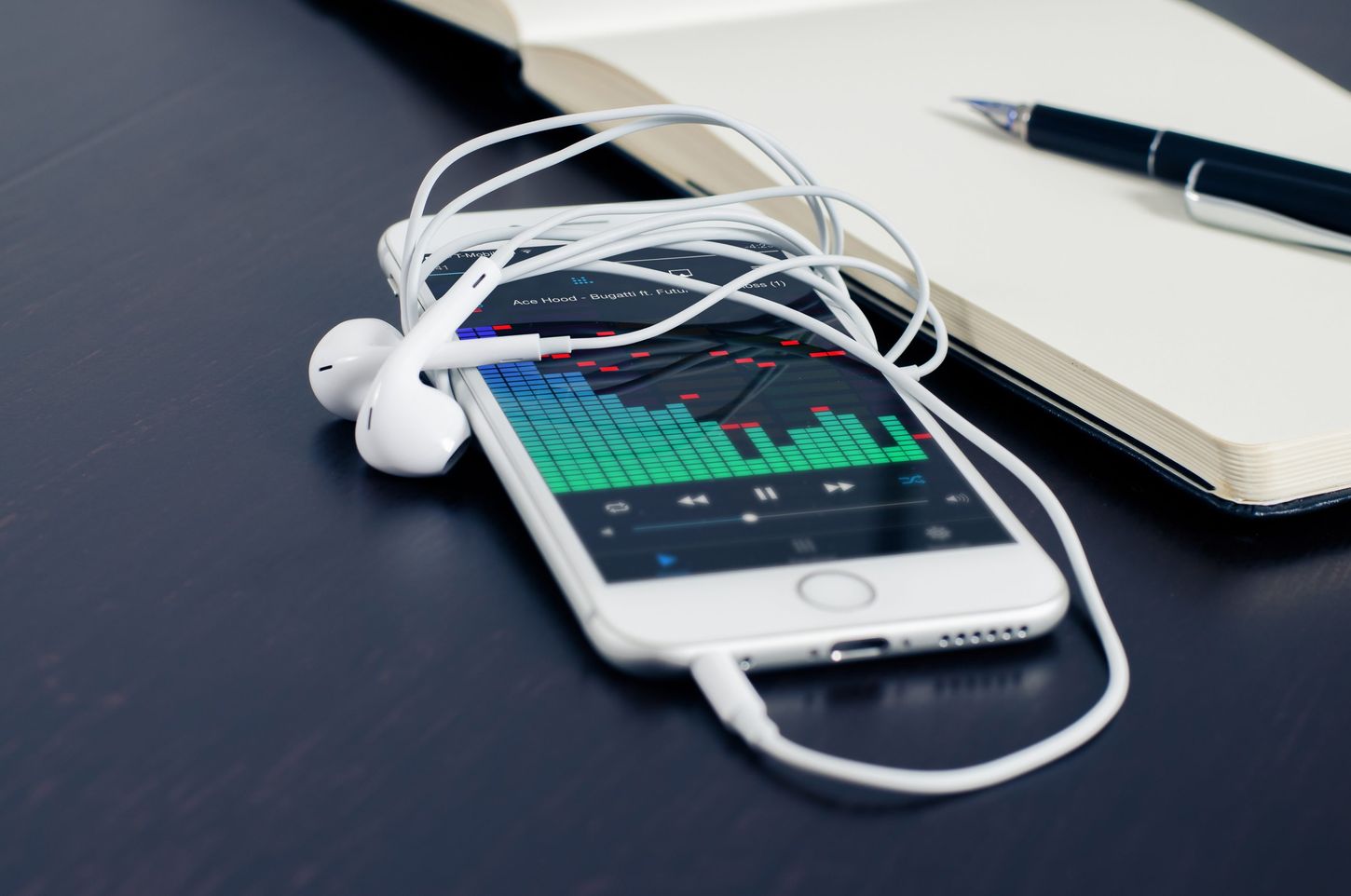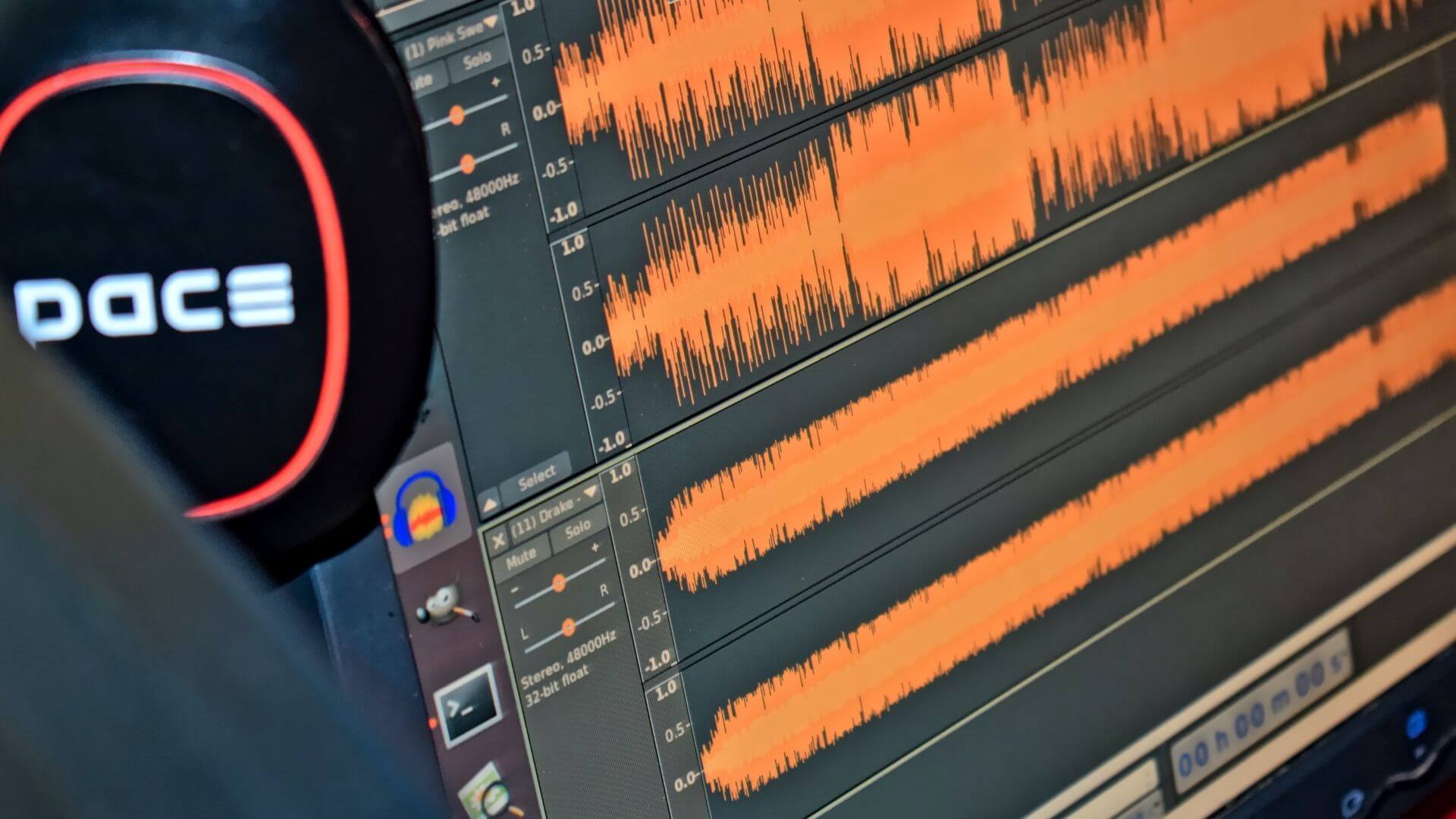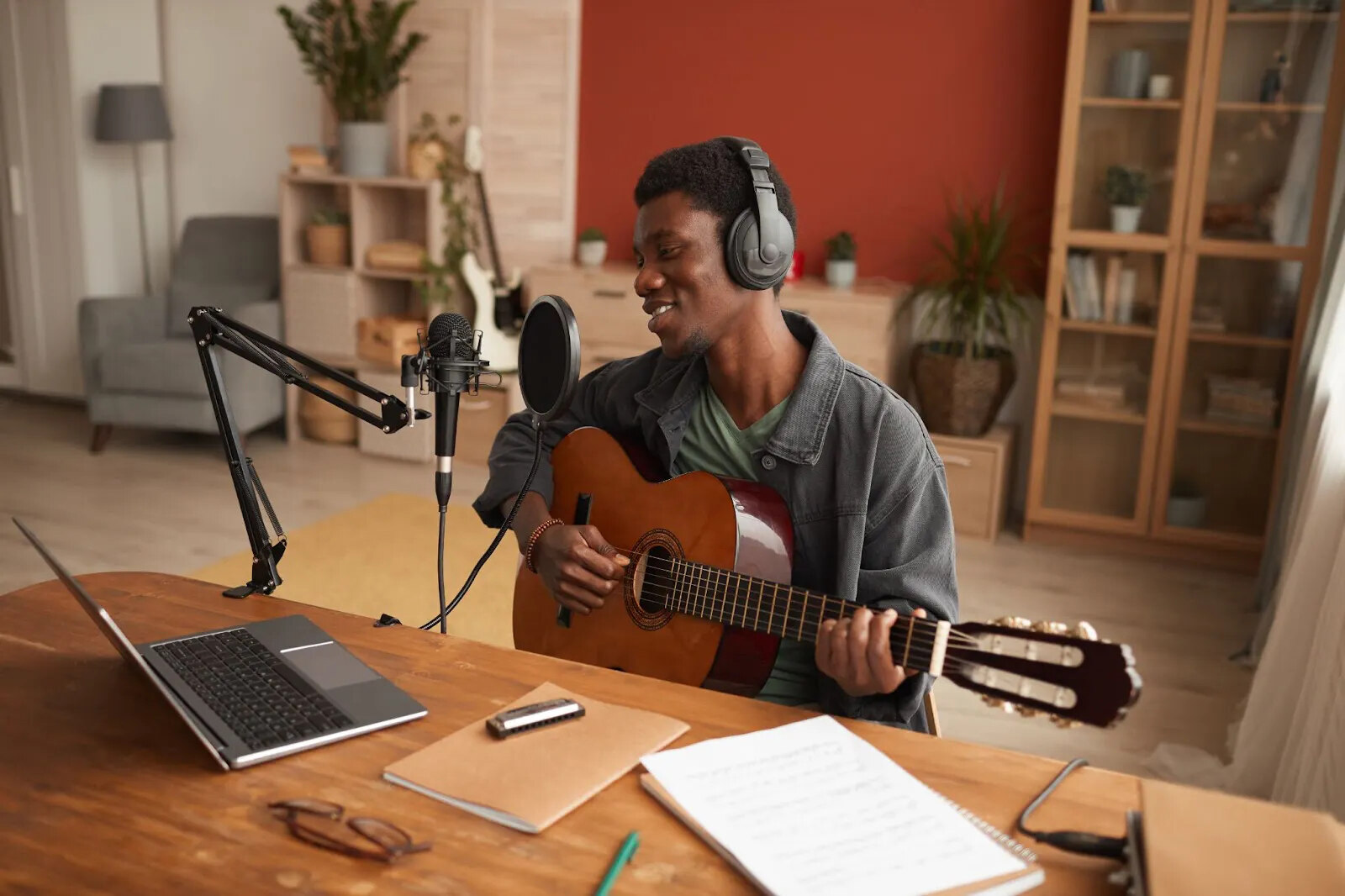Home>Production & Technology>Digital>What Is Digital Licensing In Music


Digital
What Is Digital Licensing In Music
Published: March 9, 2024
Learn about digital licensing in music, including the rights and permissions required for digital distribution and streaming. Understand the impact of digital platforms on music licensing.
(Many of the links in this article redirect to a specific reviewed product. Your purchase of these products through affiliate links helps to generate commission for AudioLover.com, at no extra cost. Learn more)
Table of Contents
Introduction
In today's digital age, the music industry has undergone a profound transformation, with the advent of digital platforms revolutionizing the way music is created, distributed, and consumed. As music enthusiasts increasingly turn to online streaming services, digital downloads, and social media platforms to access their favorite tunes, the concept of digital licensing has emerged as a pivotal aspect of the industry's landscape.
Digital licensing in music refers to the process through which music rights are granted to individuals, organizations, or platforms for the digital distribution, performance, or synchronization of musical works. This licensing framework enables artists, record labels, and music publishers to regulate and monetize the usage of their creative content in the digital realm.
The digital licensing ecosystem encompasses a wide array of rights, including mechanical rights, performance rights, synchronization rights, and master recording rights, each playing a crucial role in governing the usage of music across various digital platforms. From streaming services such as Spotify and Apple Music to social media platforms like TikTok and Instagram, digital licensing serves as the cornerstone that facilitates the lawful dissemination of music in the online sphere.
As the digital music landscape continues to evolve, the complexities surrounding digital licensing have become increasingly pronounced, necessitating a comprehensive understanding of the intricacies involved. From navigating the intricacies of royalty calculations to ensuring compliance with copyright laws, the realm of digital licensing presents a multifaceted terrain that demands meticulous attention to detail and a nuanced comprehension of legal and business aspects.
In the subsequent sections of this article, we will delve deeper into the nuances of digital licensing in music, exploring the various types of digital licenses, the significance of digital licensing in the contemporary music industry, as well as the challenges that stakeholders encounter in this dynamic domain. By unraveling the intricacies of digital licensing, we aim to shed light on the pivotal role it plays in shaping the modern music landscape and the implications it holds for artists, rights holders, and digital platforms.
Understanding Digital Licensing
Digital licensing in the music industry encompasses the intricate framework through which music rights are authorized for digital distribution, performance, and synchronization. This multifaceted process involves the granting of permissions and the establishment of terms and conditions that govern the usage of musical works in the digital sphere. At its core, digital licensing serves as the linchpin that regulates the lawful dissemination of music across a myriad of online platforms, ranging from streaming services and digital download stores to social media networks and user-generated content platforms.
The digital licensing landscape is underpinned by a diverse array of rights, each playing a pivotal role in delineating the permissible uses of music in the digital realm. Mechanical rights, which pertain to the reproduction and distribution of musical compositions, form a cornerstone of digital licensing, governing the digital sales, downloads, and streaming of music. Performance rights, on the other hand, govern the public performance of musical works through digital mediums, encompassing activities such as online streaming, webcasting, and digital radio broadcasts. Synchronization rights, which regulate the usage of music in conjunction with visual media, are also integral components of digital licensing, dictating the licensing of music for use in films, television shows, advertisements, and online videos. Additionally, master recording rights, which pertain to the licensing of specific sound recordings, further contribute to the complexity of digital licensing, particularly in the context of digital music distribution and streaming platforms.
The process of digital licensing involves a meticulous delineation of rights, royalties, and usage parameters, necessitating a comprehensive understanding of copyright laws, licensing agreements, and royalty structures. Rights holders, including artists, composers, music publishers, and record labels, play a pivotal role in overseeing the digital licensing of their musical works, ensuring that their creative content is safeguarded and monetized effectively in the digital landscape. Moreover, digital platforms and service providers are tasked with obtaining the requisite licenses and permissions to lawfully distribute and utilize music, thereby upholding the integrity of intellectual property rights and fostering a sustainable ecosystem for music consumption in the digital age.
In essence, understanding digital licensing in music entails grappling with the intricate web of rights, regulations, and commercial dynamics that underpin the digital dissemination of musical works. By navigating the complexities of digital licensing, stakeholders can forge mutually beneficial partnerships, uphold the rights of creators, and foster a vibrant digital music ecosystem that resonates with audiences worldwide.
Types of Digital Licenses
Digital licensing in the music industry encompasses a diverse spectrum of licenses that govern the usage and distribution of musical works in the digital domain. These licenses play a pivotal role in delineating the permissible uses of music across various digital platforms, ensuring that rights holders are duly compensated for the exploitation of their creative content. Understanding the nuances of different types of digital licenses is essential for navigating the intricacies of music rights management and fostering a sustainable ecosystem for digital music consumption.
-
Mechanical License: A mechanical license grants permission for the reproduction and distribution of a musical composition. In the digital realm, this license is crucial for facilitating the digital sales, downloads, and streaming of music. Digital music stores, streaming platforms, and online music services obtain mechanical licenses to lawfully distribute and monetize musical works, thereby ensuring that composers and music publishers receive royalties for the digital exploitation of their compositions.
-
Performance License: Performance licenses govern the public performance of musical works through digital mediums, encompassing activities such as online streaming, webcasting, and digital radio broadcasts. Digital platforms that offer music streaming services, online radio stations, and live performance webcasts are required to secure performance licenses to legally broadcast and perform musical works in the digital sphere. These licenses are instrumental in compensating songwriters, composers, and music publishers for the public performance of their works in the digital domain.
-
Synchronization License: Synchronization licenses regulate the usage of music in conjunction with visual media, including films, television shows, advertisements, and online videos. In the digital landscape, synchronization licenses are pivotal for facilitating the lawful integration of music into visual content distributed across digital platforms. Content creators, filmmakers, advertising agencies, and online video creators obtain synchronization licenses to synchronize music with their visual productions, ensuring that rights holders are remunerated for the digital synchronization of their musical works.
-
Master Use License: Master use licenses pertain to the licensing of specific sound recordings, granting permission for the use of pre-existing recordings in digital mediums. Digital platforms, streaming services, and content creators seeking to utilize existing sound recordings in their digital productions obtain master use licenses to ensure compliance with copyright laws and compensate recording artists, record labels, and rights holders for the digital exploitation of master recordings.
By comprehensively understanding the intricacies of these digital licenses, rights holders, digital platforms, and content creators can navigate the complexities of digital music licensing, foster mutually beneficial partnerships, and uphold the integrity of music rights in the digital age.
Importance of Digital Licensing in Music
Digital licensing holds immense significance in the contemporary music landscape, serving as a linchpin that underpins the lawful dissemination, monetization, and protection of musical works in the digital sphere. The importance of digital licensing in music is multifaceted, encompassing pivotal aspects that resonate with artists, rights holders, digital platforms, and music enthusiasts alike.
First and foremost, digital licensing plays a pivotal role in safeguarding the intellectual property rights of artists, composers, and music publishers in the digital realm. By obtaining the requisite licenses for the digital distribution, performance, and synchronization of musical works, rights holders can exercise control over the usage of their creative content, ensuring that their works are disseminated lawfully and that they receive fair compensation for their artistic endeavors. This not only fosters a conducive environment for creativity and innovation but also upholds the integrity of music rights in the digital age.
Moreover, digital licensing is instrumental in facilitating the monetization of music in the digital landscape. Through the acquisition of digital licenses, artists and rights holders can leverage their creative content across a myriad of digital platforms, including streaming services, online music stores, social media networks, and user-generated content platforms, thereby tapping into diverse revenue streams. This not only empowers artists to derive income from their musical works but also fosters a sustainable ecosystem for music consumption, wherein creators are duly compensated for the digital exploitation of their compositions and recordings.
Furthermore, digital licensing holds profound implications for digital platforms and service providers, as it enables them to lawfully distribute and utilize music while upholding the rights of creators. By obtaining the necessary licenses for music streaming, digital downloads, and synchronization with visual content, digital platforms can offer a rich and diverse catalog of music to their users, thereby enhancing the overall music consumption experience. This, in turn, fosters mutually beneficial partnerships between rights holders and digital platforms, culminating in a vibrant digital music ecosystem that resonates with audiences worldwide.
In essence, the importance of digital licensing in music extends beyond mere regulatory compliance; it embodies the fundamental principles of intellectual property protection, fair compensation for creators, and the seamless integration of music into the digital fabric of contemporary society. By embracing the significance of digital licensing, stakeholders can collectively nurture a dynamic and sustainable landscape for music in the digital age, wherein creativity thrives, rights are respected, and music resonates with global audiences.
Challenges in Digital Licensing
Navigating the terrain of digital licensing in the music industry presents a myriad of challenges that underscore the complexities and intricacies inherent in the digital dissemination of musical works. These challenges, ranging from legal and administrative hurdles to technological and commercial complexities, underscore the multifaceted nature of digital licensing and its profound implications for artists, rights holders, and digital platforms.
One of the foremost challenges in digital licensing pertains to the intricacies of rights management and royalty calculations. The multifaceted nature of music rights, encompassing mechanical rights, performance rights, synchronization rights, and master recording rights, necessitates a meticulous approach to rights clearance and royalty distribution. This intricate web of rights often leads to complexities in ascertaining the rightful owners, obtaining the necessary licenses, and accurately calculating and disbursing royalties, thereby posing a significant challenge for stakeholders involved in digital licensing.
Moreover, the global nature of digital music distribution introduces complexities related to cross-border licensing and international copyright laws. As music transcends geographical boundaries in the digital sphere, navigating the landscape of international licensing agreements, copyright regulations, and royalty collection mechanisms becomes inherently challenging. The need to harmonize licensing frameworks across diverse jurisdictions, comply with international copyright treaties, and address territorial rights considerations poses a formidable challenge in the realm of digital licensing.
Technological advancements and the evolving digital landscape also give rise to challenges in monitoring and enforcing digital licenses. With the proliferation of user-generated content platforms, social media networks, and digital distribution channels, ensuring compliance with licensing terms and combating unauthorized usage of music becomes increasingly complex. The need for robust content identification technologies, digital rights management systems, and effective enforcement mechanisms presents a significant challenge in safeguarding the integrity of digital licenses and combating copyright infringement in the digital domain.
Furthermore, the dynamic nature of digital music consumption, characterized by evolving business models, streaming platforms, and consumer preferences, introduces commercial complexities in digital licensing. The need to adapt licensing frameworks to accommodate new modes of music consumption, negotiate equitable licensing terms with digital platforms, and address the implications of emerging technologies such as blockchain and artificial intelligence in music rights management poses a continual challenge for stakeholders in the digital licensing landscape.
In essence, the challenges in digital licensing underscore the intricate tapestry of legal, administrative, technological, and commercial complexities that permeate the digital dissemination of music. By addressing these challenges through collaborative efforts, technological innovation, and legal harmonization, stakeholders can navigate the terrain of digital licensing more effectively, fostering a sustainable and vibrant ecosystem for music in the digital age.
Conclusion
In conclusion, digital licensing stands as a cornerstone of the contemporary music industry, shaping the landscape of music dissemination, consumption, and monetization in the digital age. The intricate framework of digital licensing, encompassing mechanical rights, performance rights, synchronization rights, and master recording rights, underscores the multifaceted nature of music rights management in the digital realm. By obtaining the requisite licenses for digital distribution, performance, and synchronization, rights holders can exercise control over the usage of their creative content, ensuring fair compensation and upholding the integrity of music rights.
The significance of digital licensing extends beyond regulatory compliance, embodying the fundamental principles of intellectual property protection, fair compensation for creators, and the seamless integration of music into the digital fabric of contemporary society. Through digital licensing, artists and rights holders can leverage their creative content across a myriad of digital platforms, tapping into diverse revenue streams and fostering a sustainable ecosystem for music consumption. Moreover, digital platforms and service providers can offer a rich and diverse catalog of music to their users, enhancing the overall music consumption experience and fostering mutually beneficial partnerships with rights holders.
However, the challenges inherent in digital licensing, including rights management complexities, international licensing considerations, technological enforcement hurdles, and evolving commercial dynamics, underscore the intricacies involved in navigating the digital music landscape. Addressing these challenges requires collaborative efforts, technological innovation, and legal harmonization to foster a sustainable and vibrant ecosystem for music in the digital age.
As the digital music landscape continues to evolve, the role of digital licensing in shaping the industry's trajectory becomes increasingly pronounced. By embracing the complexities and opportunities inherent in digital licensing, stakeholders can collectively nurture a dynamic and sustainable landscape for music in the digital age, wherein creativity thrives, rights are respected, and music resonates with global audiences.











